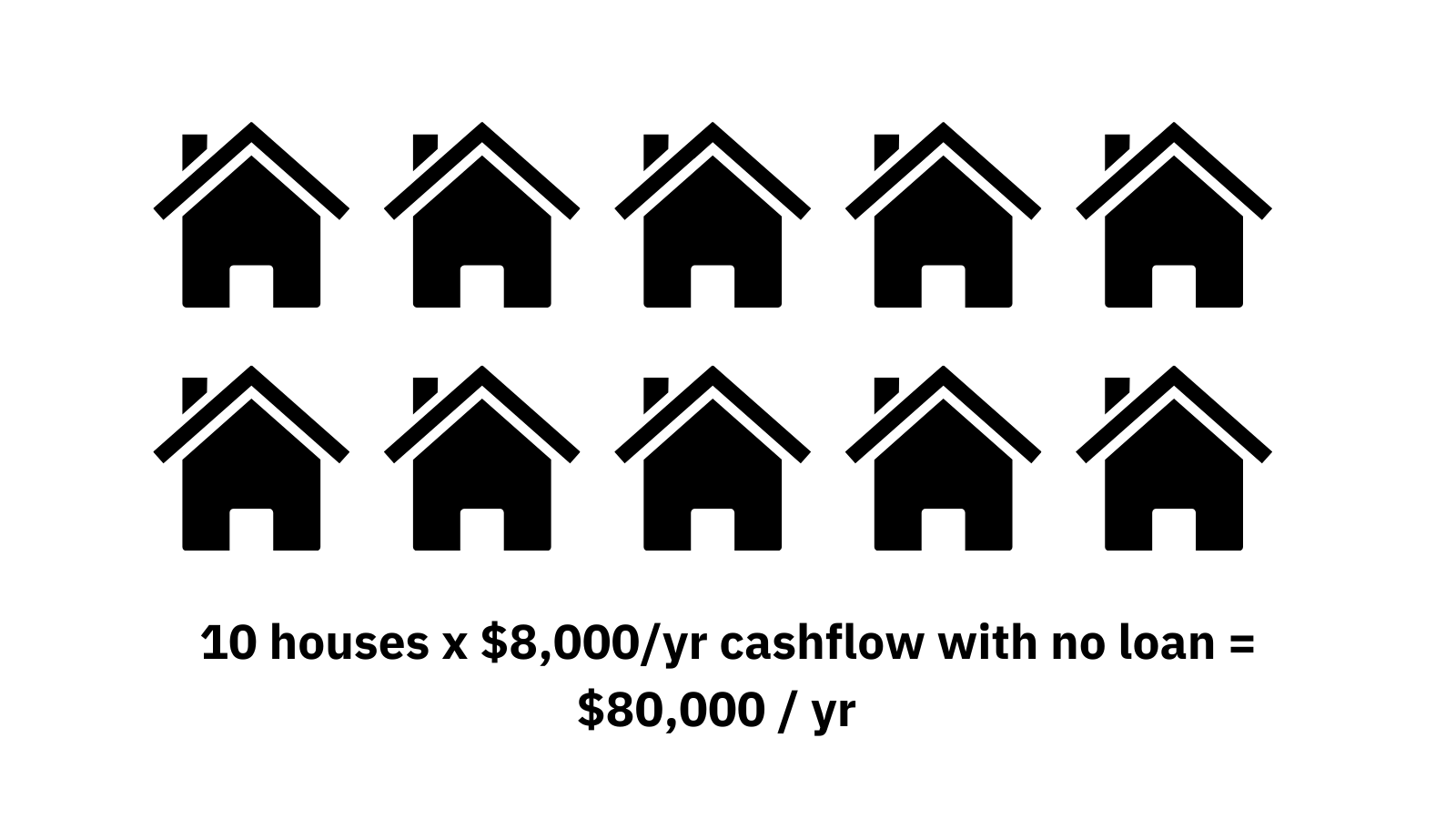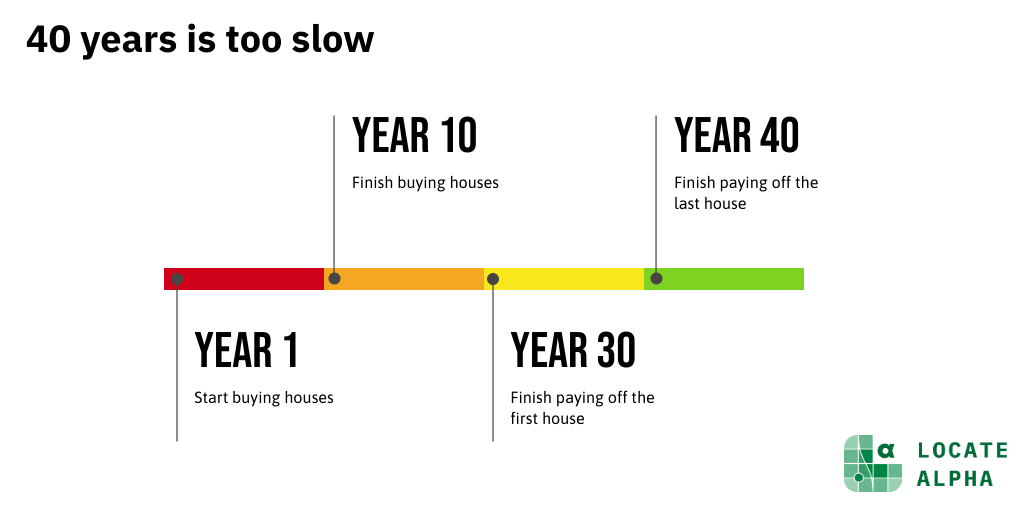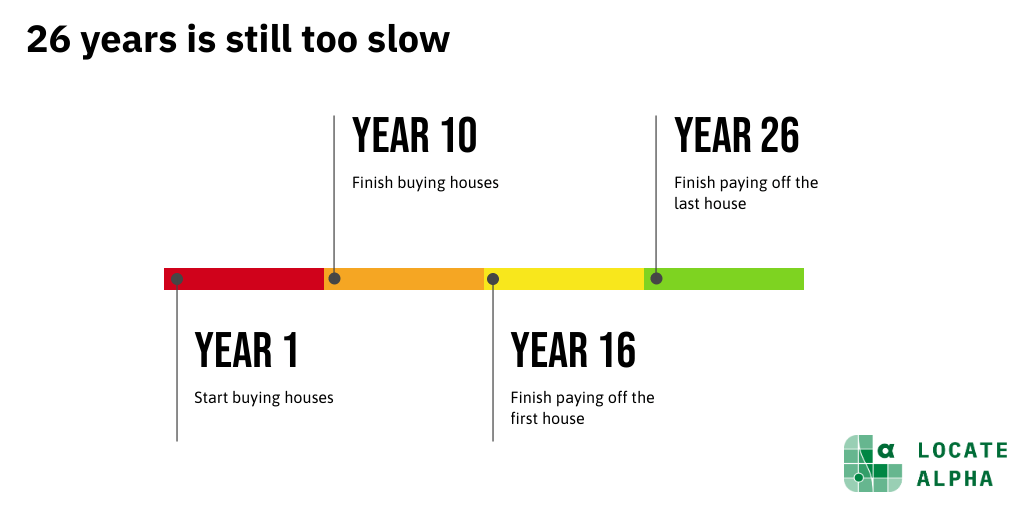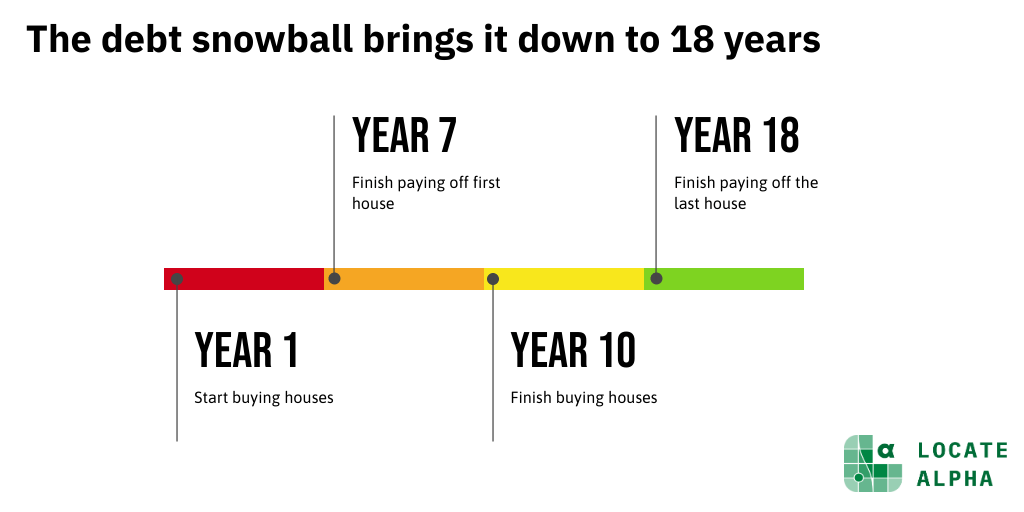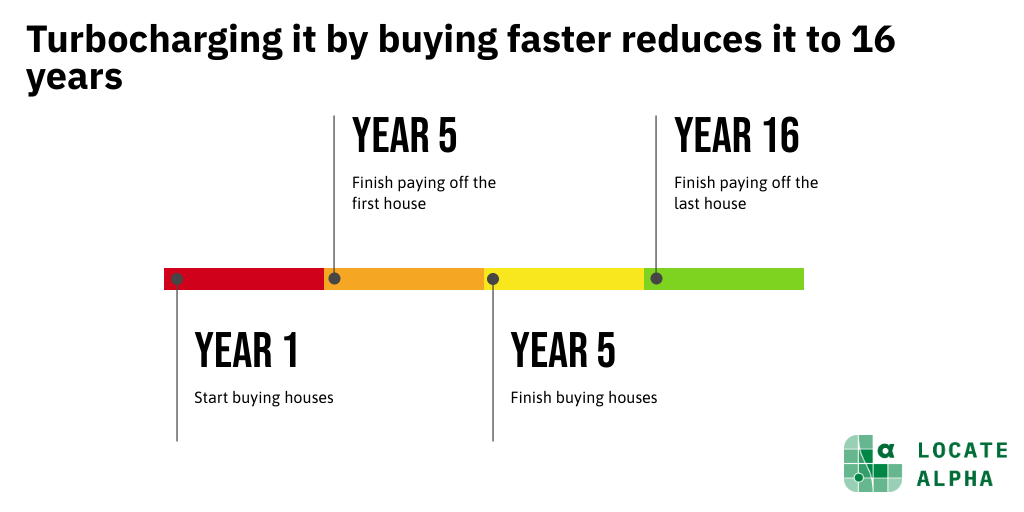A tried-and-true method for any kind of debt reduction is the “snowball” method. It’s a metaphor for a ball of snow rolling down a hill and getting larger as it picks up more snow.
It works amazingly well for real estate as well.
Consider a simple example. A portfolio of ten nice rental units, fully paid off, might be your ticket to financial freedom.
Paying them off the lazy way
As an aggressive saver with a goal in mind, you could save up a down payment every year and finance another house each year. That means 10 years to buy 10 houses, and 30 years paying off each of them. Since it takes 30 years to pay off the last house, it takes 40 years in total to get to a point where all 10 are paid off.
(If your properties had ample cashflow and you used 15-year loans, you are still looking at a total of 25 years to get to 10 paid-off houses.)
10 years buying + 30 years paying off = 40 years in total
To speed things up, you might take the leftover cashflow on each house and use that to pay down the loan faster. This helps trim a few years off the loan repayment, allowing you to pay off all ten loans in 16 years rather than 30. That means you spend 10 years acquiring the homes and 16 years paying off each, for a total of 26 years to financial freedom.
You can do better.
10 years buying + 16 years paying off the last house = 26 years in total
The answer is the snowball method
To create a snowball, you combine all of the cashflow from all of the properties and use them to pay down the loans one at a time.
For example, in the beginning, you only have one property. But as you buy more properties, the cashflow from them starts to add up to something. In our example, each house might cashflow a few hundred dollars. Once you have several houses, that means you are putting a thousand dollars or more toward early paydown of the mortgage on the first house.
And then, once that first house is paid off, suddenly there’s a lot more cashflow coming out of it because there is no debt to pay off. Combining that with cashflow from the other houses becomes an even bigger amount, which you apply to the second loan. One you pay off the second, you move onto the third, and so on.
Buying one house per year, and snowballing the debt, means you could pay off 10 houses in 18 years. That’s 8 years faster than the last method.
10 years buying + 8 years to pay off the last one = 18 years
Turbocharge it
To turbocharge it even more, what if you were able to scrape together enough money to finance 2 hours in a year. Maybe possible, maybe not. But this would cut it by a further 3 years, to only 16 in total.
10 years buying + 4 years to pay off the last one = 16 years
To be fair, 16 years of aggressive savings in an index fund could get comparable results, if long-run average performance persists. But, 16 years is considered a relatively short horizon for the index fund method, because your position in the market cycle has a greater impact that it would over, say, 30 years.
Investment homes can help reduce your exposure to the ups and downs of the stock market. A house’s worth does not change by the day, especially if you invest in the high-cash flow inland markets where prices have fewer ups and downs. You also don’t need to rely on appreciation of the homes to make this work. Having tenants help pay down your loans is all it takes.
Getting the ingredients right
The snowball method requires investing in properties that generate cashflow. In this day and age, finding such houses is increasingly challenging. Even more so if your appetite for risk isn’t particularly high. This is where Locate Alpha comes in. Helping you find that needle in the haystack that improves your odds of success.

